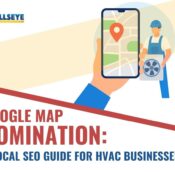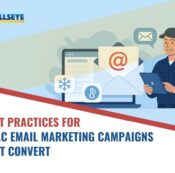
Crush the Competition – Social Media Tactics That Drive Sales in the Synthetic Turf Sector!
Social media is no longer just a platform for socializing or sharing pictures. For businesses, particularly in niche industries like synthetic turf, it’s a powerhouse tool that can drive sales, increase brand awareness, and foster customer loyalty. Whether you’re selling artificial grass for residential lawns or turf for sports fields, leveraging the power of social media is critical to Synthetic Turf Sales. In this blog, we’ll explore how turf businesses can use social media tactics to crush the competition and drive sales growth in the synthetic turf sector.
Call Now For The Expert Digital Marketing Solutions: 561-277-0148
Discover powerful social media tactics to crush the competition in the synthetic turf sector. Boost Synthetic Turf Sales through Social Selling for Turf, targeted ads, and effective Turf Business Growth Strategies that drive engagement, leads, and increased sales.
Introduction: Why Social Media Matters for Synthetic Turf Sales
Social media has revolutionized how businesses reach customers, engage with audiences, and drive sales. In the competitive synthetic turf market, social media provides an excellent platform to showcase products, interact with customers, and grow your business. With the right strategies, you can use Social Selling for Turf to boost conversions and increase revenue.
For turf businesses, Synthetic Turf Sales Boost isn’t just about pushing sales but creating an engaging experience that educates potential buyers about the advantages of artificial grass. Social media allows businesses to target their ideal customers, nurture relationships, and ultimately generate leads that translate into sales. This is why Turf Business Growth Strategies must include a robust social media presence.
The Power of Social Media: How to Leverage It for Synthetic Turf Sales
When used correctly, social media can be an incredibly effective tool for boosting Synthetic Turf Sales Boost. The key to success lies in understanding how to leverage each platform to reach your target audience.
Social Selling for Turf
Social Selling for Turf involves using platforms like Facebook, Instagram, LinkedIn, and even TikTok to sell your products by building meaningful relationships with your target audience. Unlike traditional sales methods, social selling emphasizes engagement, education, and trust-building rather than hard selling.
Creating high-quality, engaging content, such as tips on choosing the right synthetic grass or showing before-and-after installation photos, helps establish authority in the industry. Through consistent posting and meaningful engagement, turf businesses can gradually convert followers into customers.
Social Media Sales for Turf
Social Media Sales for Turf relies on two main strategies: organic content and paid advertising. Organic content, such as customer testimonials, educational posts, and user-generated content, can drive engagement and increase visibility. This content not only informs but also builds credibility and trust among potential buyers.
On the other hand, paid social media ads allow for targeted advertising to reach a specific audience. For example, Facebook and Instagram ads can be customized to target homeowners in certain geographic regions who are interested in home improvement. This allows turf businesses to reach their ideal customers and increase the likelihood of a Synthetic Turf Sales Boost.
Crafting Your Turf Business Online Sales Strategy
To drive growth, your turf business needs a clear, well-structured online sales strategy. Turf Business Online Sales depend heavily on both attracting visitors to your website and converting those visitors into customers.
Building a Strong Online Presence
A strong online presence is essential for any turf business. This begins with an engaging website that’s easy to navigate and provides all the information potential customers need. Including compelling calls-to-action (CTAs) on your website encourages visitors to take the next step, whether it’s requesting a quote or scheduling a consultation.
In addition to a solid website, a robust social media presence helps your business become more discoverable. Platforms like Instagram and Pinterest are perfect for showcasing visually appealing images of lush green turf, while Facebook is ideal for community engagement and fostering conversations.
Artificial Turf Lead Generation
Lead generation is a critical component of any online sales strategy. For turf businesses, Artificial Turf Lead Generation can be achieved through both organic social media posts and paid campaigns. A great way to capture leads is by offering free resources, such as downloadable eBooks or cost calculators, in exchange for a potential customer’s contact information.
Another effective tactic is to run paid social media campaigns that offer a limited-time promotion or discount. By creating urgency with a time-sensitive offer, you can encourage leads to take action and move further down the sales funnel.
Turf Industry Marketing Tactics That Work
The turf industry is competitive, but with the right Turf Industry Marketing Tactics, you can stand out. These tactics can be used to increase brand awareness, drive traffic, and convert leads into sales.
Content Marketing and Education
Content marketing is a cornerstone of any successful social media strategy. For turf businesses, this means providing valuable content that educates potential customers. Whether it’s writing blog posts about the benefits of artificial grass or sharing how-to videos on turf installation, this kind of content helps build trust with your audience.
User-Generated Content (UGC)
User-generated content (UGC) is one of the most effective forms of marketing. By encouraging your satisfied customers to share their experiences and photos of your synthetic turf, you can leverage this content to showcase your product in real-world settings. UGC is often seen as more authentic and trustworthy than traditional advertising.
Encourage your customers to post pictures of their turf installations on social media, and offer a prize or incentive for the best photos. Re-sharing these photos on your business’s social media accounts can help increase brand visibility and foster a sense of community.
Influencer Marketing
Influencer marketing is another great way to increase visibility. By partnering with local influencers or bloggers in the home improvement or landscaping space, turf businesses can gain access to their followers and promote their products to a broader audience. Influencers can create content that showcases your turf products, and their followers are likely to trust their recommendations, making it easier to convert them into leads.
Best Social Ads for Turf: What Works and What Doesn’t
Paid social media ads are a powerful tool to increase sales and reach new customers. But to get the most out of your ads, you need to know which formats work best for your business.
Video Ads for Engagement
Video is one of the most engaging types of content on social media. For turf businesses, creating a video that showcases a turf installation, demonstrates the product’s benefits, or even shows customer testimonials can be an effective way to engage your audience. Use video ads on Facebook, Instagram, and YouTube to showcase your products and educate potential buyers.
Carousel Ads for Product Showcases
Carousel ads allow you to showcase multiple images or products in a single ad. For turf businesses, this is a great way to highlight different turf options, installation processes, and before-and-after transformations. By offering a variety of visuals, carousel ads increase engagement and provide more opportunities to convert leads.
Targeted Local Ads
The synthetic turf business is often local, so running highly targeted ads based on location is key. Facebook and Instagram allow you to target users by location, making it easier to reach homeowners and businesses in specific geographic areas. These local ads are particularly effective for turf businesses that want to target people in need of artificial grass for their lawns or sports fields.
Using Social Media to Drive Turf Sector Online Marketing
Social media is an excellent platform for Turf Sector Online Marketing. By posting regular content and running strategic ad campaigns, you can drive traffic to your website and increase conversions.
Consistency Is Key
The key to success in social media is consistency. Posting regularly on your social media accounts keeps your business top-of-mind for potential customers. Whether you’re posting project updates, turf tips, or promotional offers, maintaining a steady flow of content helps build trust and familiarity with your audience.
Engage with Your Audience
Engagement is just as important as content creation. Responding to comments, sharing user-generated content, and participating in relevant industry discussions help build a loyal following. The more engaged your audience is, the more likely they are to share your content and recommend your products to others.
How to Measure Success: Tracking Your Social Media ROI in the Turf Sector
Measuring the effectiveness of your social media efforts is crucial for optimizing your strategy and ensuring you’re getting a good return on investment (ROI).
Key Metrics to Track
To measure your Turf Business Growth Strategies, track key performance indicators (KPIs) such as:
- Engagement rate: How much interaction your posts are getting (likes, shares, comments).
- Click-through rate (CTR): How many people are clicking on links in your posts or ads.
- Conversion rate: The percentage of visitors who make a purchase or sign up after engaging with your content.
- Cost per lead (CPL): How much you’re spending on ads to generate a lead.
Using tools like Google Analytics, Facebook Insights, and Instagram Analytics will help you track these metrics and determine which tactics are working best.
Turf Companies Crushing the Competition with Social Media
Let’s look at a few turf companies that have successfully used social media to boost sales and outpace their competition.
Company A saw a 40% increase in sales after using Instagram to showcase high-quality before-and-after photos of their turf installations. By using targeted hashtags and engaging with local influencers, they were able to expand their reach and attract more customers.
Company B leveraged Facebook ads to generate high-quality leads. By offering a free consultation in exchange for contact information, they increased their conversion rate by 30%. They also ran retargeting ads to remind visitors who had previously visited their site but hadn’t made a purchase.
Conclusion: The Future of Social Media in the Turf Industry
As the turf industry becomes more competitive, the need to adapt and innovate becomes ever more critical. Social media offers immense potential for businesses looking to increase Synthetic Turf Sales and boost and grow their market share. By implementing Social Selling for Turf, utilizing effective Turf Business Growth Strategies, and measuring success, turf businesses can stand out from the competition and drive sustainable growth.




